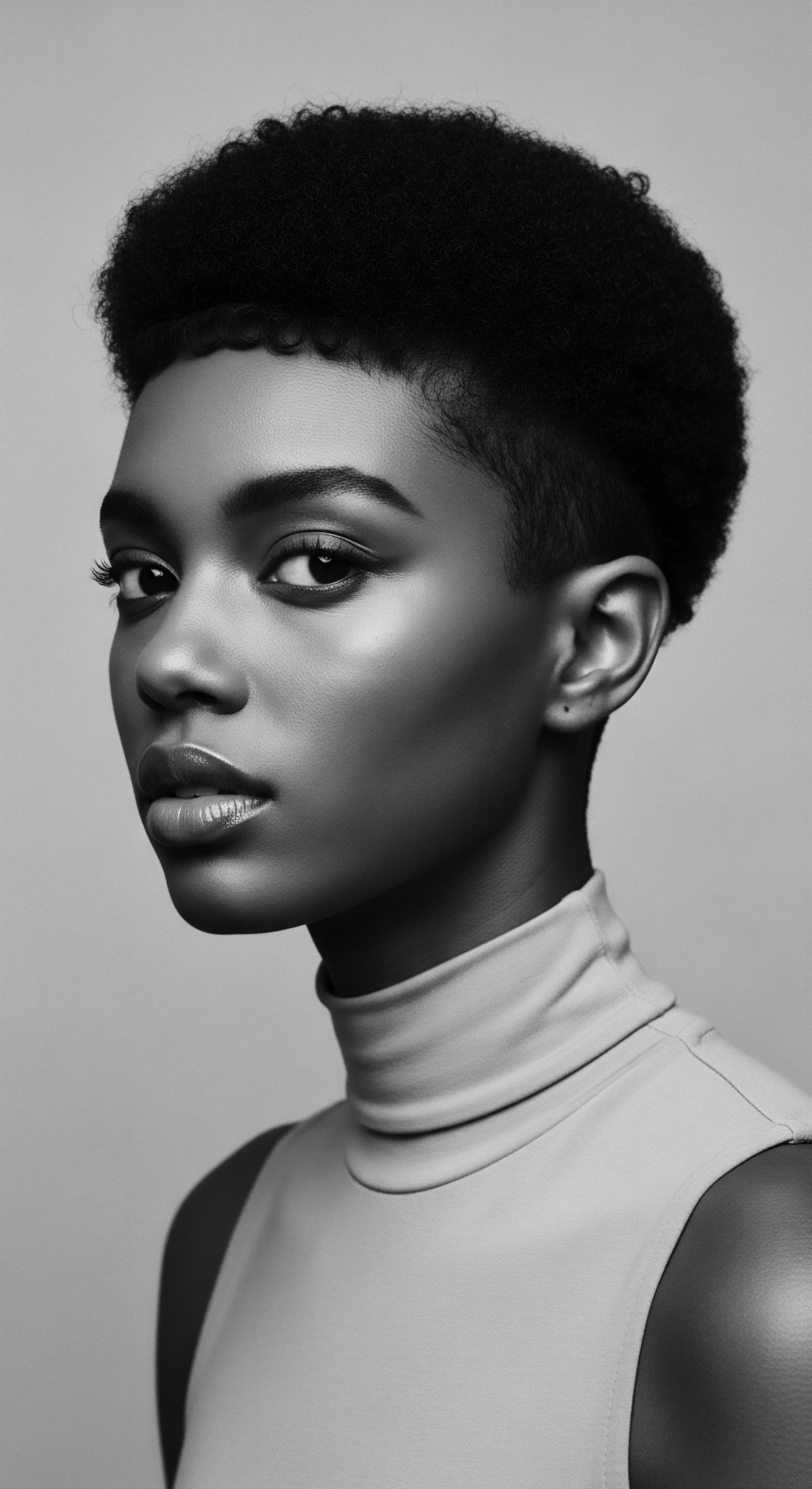
Fundamentals
The concept of Textured Hair Styles reaches back through millennia, finding its very root in the coiled, kinky, and wavy strands that grace a significant portion of humanity. It represents the deliberate shaping, adornment, and upkeep of hair possessing distinct patterns of curl and coil, often in stark contrast to the straight, lissome forms characteristic of other hair types. This definition transcends mere aesthetics, extending into a profound cultural statement, a legacy of care, and a biological testament to resilience. At its core, the meaning of Textured Hair Styles is a recognition of inherent hair morphology and the diverse artistic, social, and spiritual traditions born from it across the globe, with particular resonance in Black and mixed-race communities.
For generations, the hair of individuals of African descent, with its unique follicular structure, has been more than a biological attribute; it has served as a canvas for communication and a living record of collective experience. The unique curl patterns, which arise from the elliptical shape of the hair follicle and the way keratin proteins are distributed, lend themselves to an extraordinary range of configurations, from tightly packed coils to broader, undulating waves. This natural architecture permits an array of styles that defy gravity, hold intricate designs, and offer protective benefits unmatched by other hair textures.
From the ancient riverine civilizations to the bustling cities of today, these styles have always carried a deep sense of identity. The very act of styling textured hair, whether through braiding, twisting, or coiling, often involves communal effort, embodying a shared knowledge passed down from elder to youth. This collective engagement transforms hair care from a solitary ritual into a binding social activity, fostering connections and reinforcing cultural bonds that speak volumes about a people’s shared heritage.
Textured Hair Styles signify the artful shaping of coily, kinky, and wavy hair, serving as a profound expression of heritage, communal wisdom, and enduring identity for Black and mixed-race communities across history.
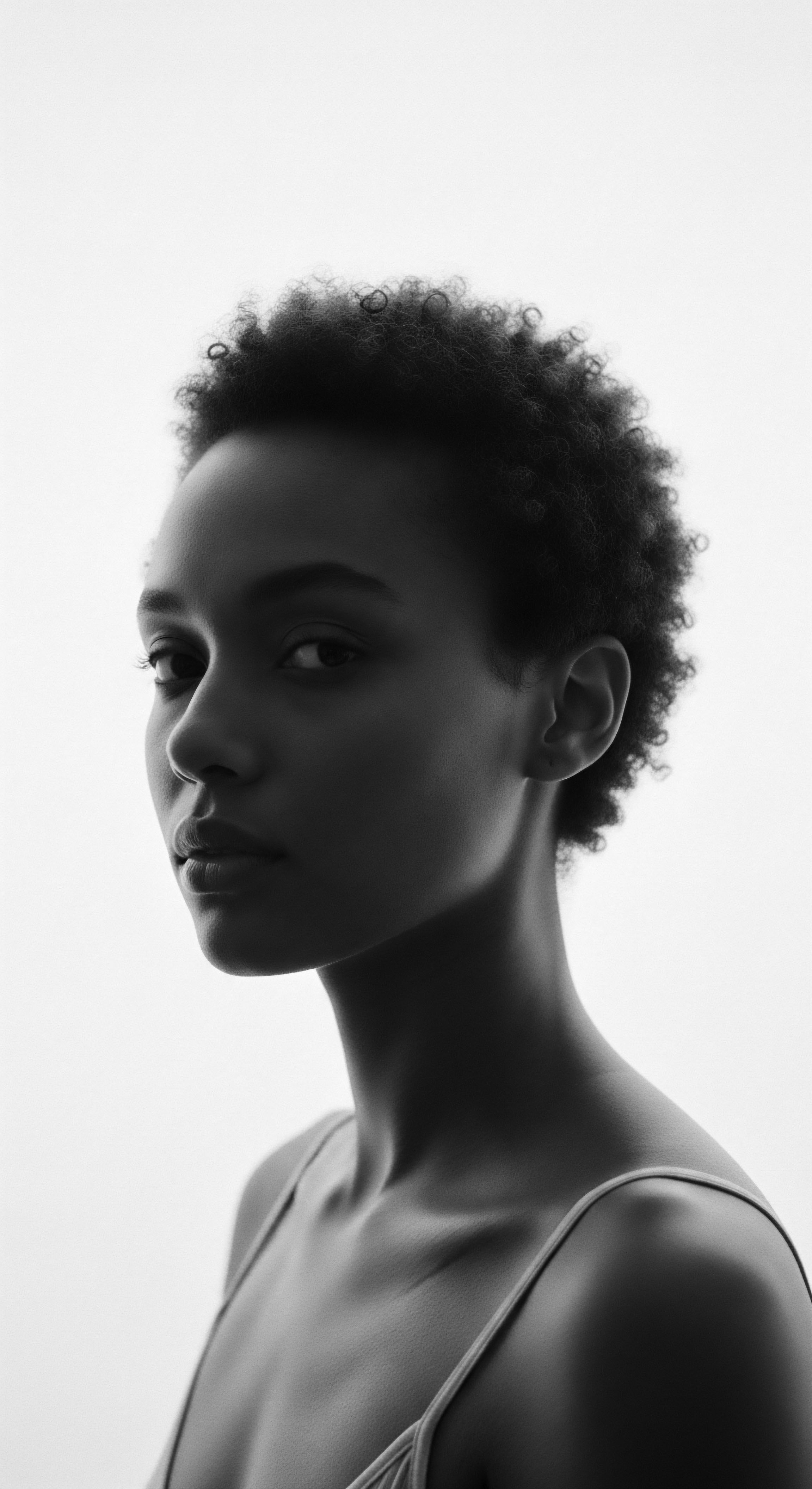
Early Echoes ❉ The Ancestral Crafting of Form
The earliest known evidence of hair styling reaches back into antiquity, with depictions of braids dating to 3500 BCE in ancient African civilizations, particularly in Egypt and Namibia. These styles were never simply decorative; they conveyed elaborate systems of meaning. In West African societies during the 1400s, an individual’s hairstyle communicated their social standing, marital status, wealth, age, and even their tribal affiliation.
The distinct patterns on the scalp served as visual markers, a silent language spoken through the intricate artistry of hair. This traditional understanding provides a fundamental explanation of how textured hair became a central element of cultural expression, predating written records.
These early methods of hair styling were deeply integrated into daily life and ceremony. The care rituals, too, were steeped in ancestral wisdom, utilizing indigenous ingredients such as shea butter and various botanical blends to nourish and protect the hair from environmental elements. The ingenuity of these practices ensured both the health of the hair and the longevity of the styles. The very fibers of the hair, with their unique structure, were understood and respected, allowing for artistic expressions that would endure for days, sometimes even weeks.
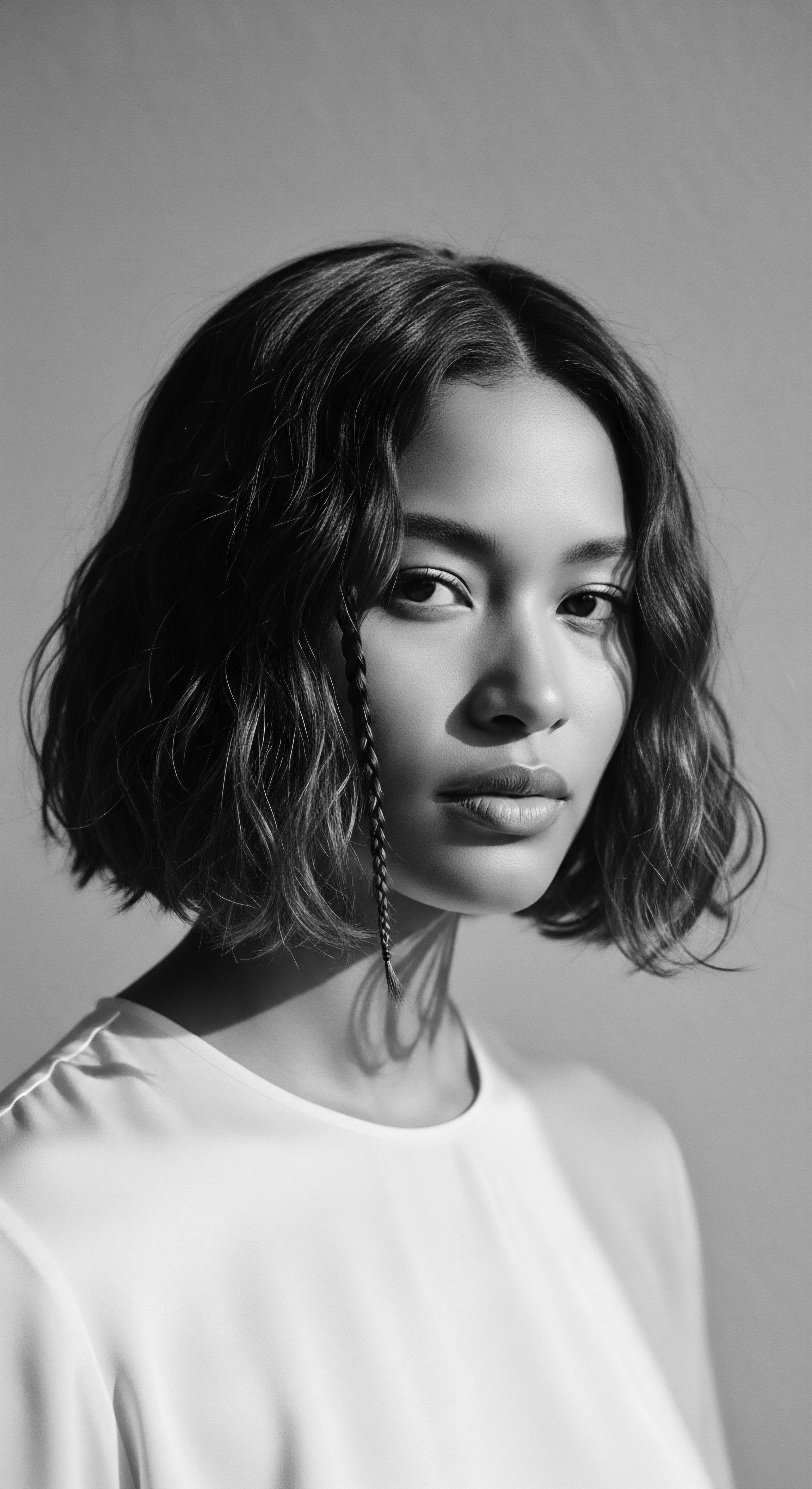
Hair as a Societal Blueprint
The foundational practices surrounding Textured Hair Styles were, for many African societies, a mirror reflecting the community’s structure. The time-consuming nature of many traditional styles, often requiring hours of work, encouraged communal grooming sessions where stories were exchanged, skills were taught, and generational ties were solidified. This communal aspect underscores the initial designation of Textured Hair Styles not as a mere personal preference, but as a collective societal endeavor, deeply woven into the fabric of communal life and the perpetuation of heritage.
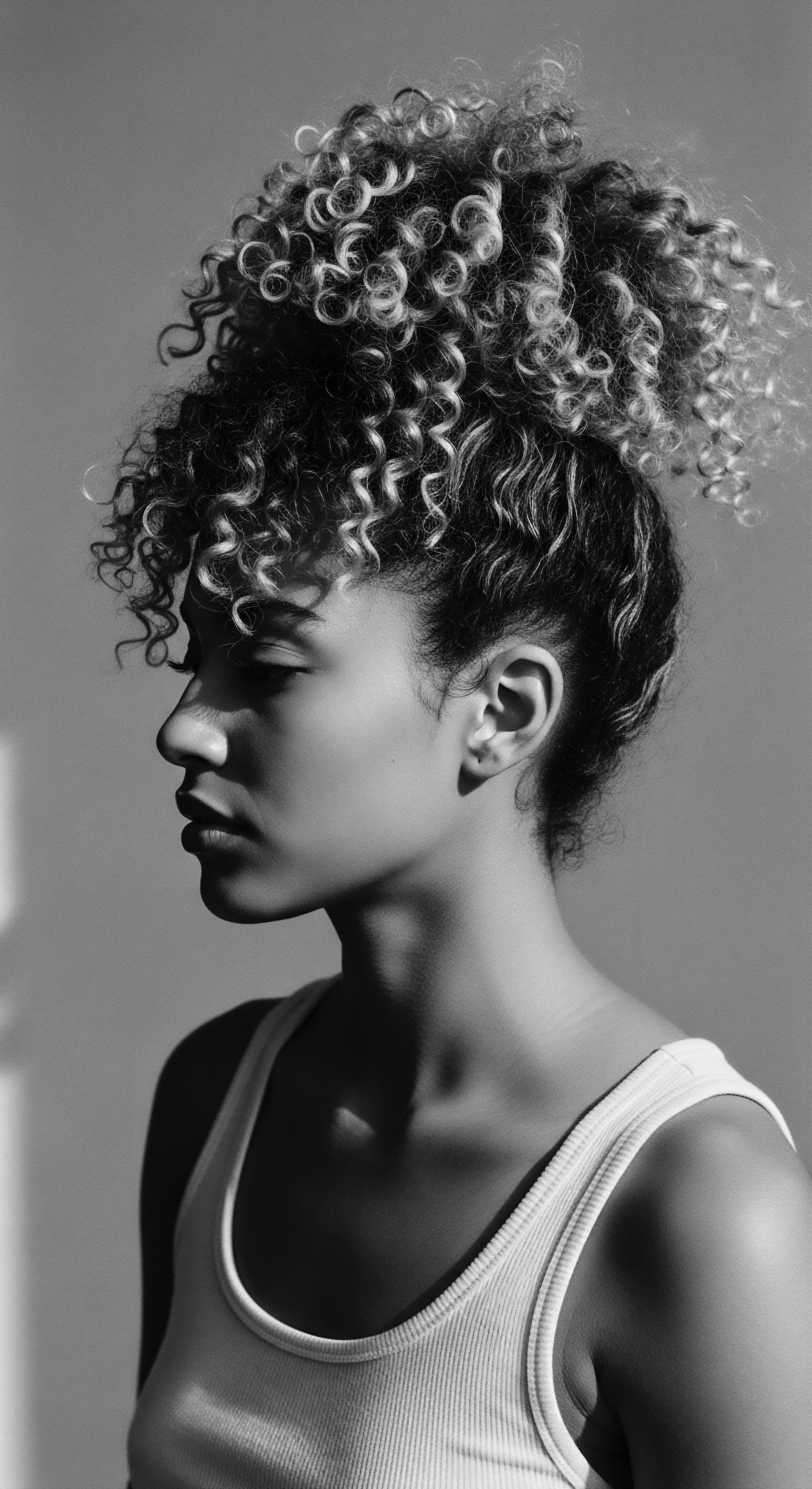
Intermediate
Venturing deeper, the meaning of Textured Hair Styles evolves into a testament to cultural resilience and an enduring symbol of identity, especially within the African diaspora. These styles carry the weight of a rich past, a living history that speaks of adaptation, resistance, and reclamation. The very existence of these diverse hair configurations today stands as a powerful statement against centuries of attempted erasure and imposed beauty norms. Textured Hair Styles are not just forms fashioned from hair; they represent inherited wisdom, the determination to preserve traditions, and the creative spirit of a people.
The historical trajectory of textured hair, particularly from the transatlantic slave trade onward, reveals a profound struggle for self-definition. During this period, enslaved Africans were systematically stripped of their cultural practices, which included their traditional hairstyles and grooming rituals. European colonizers sought to impose Eurocentric beauty ideals, labeling Afro-textured hair as “uncivilized” or “unprofessional”.
This imposition forced many to alter their natural hair texture through often damaging means, yet the inherent desire to maintain African hair traditions persisted. This period marked a crucial shift where hair became a site of both oppression and covert resistance.
Beyond outward appearance, Textured Hair Styles are deeply rooted cultural expressions, narrating stories of historical resilience and the unyielding spirit of communities in preserving their ancestral identity.
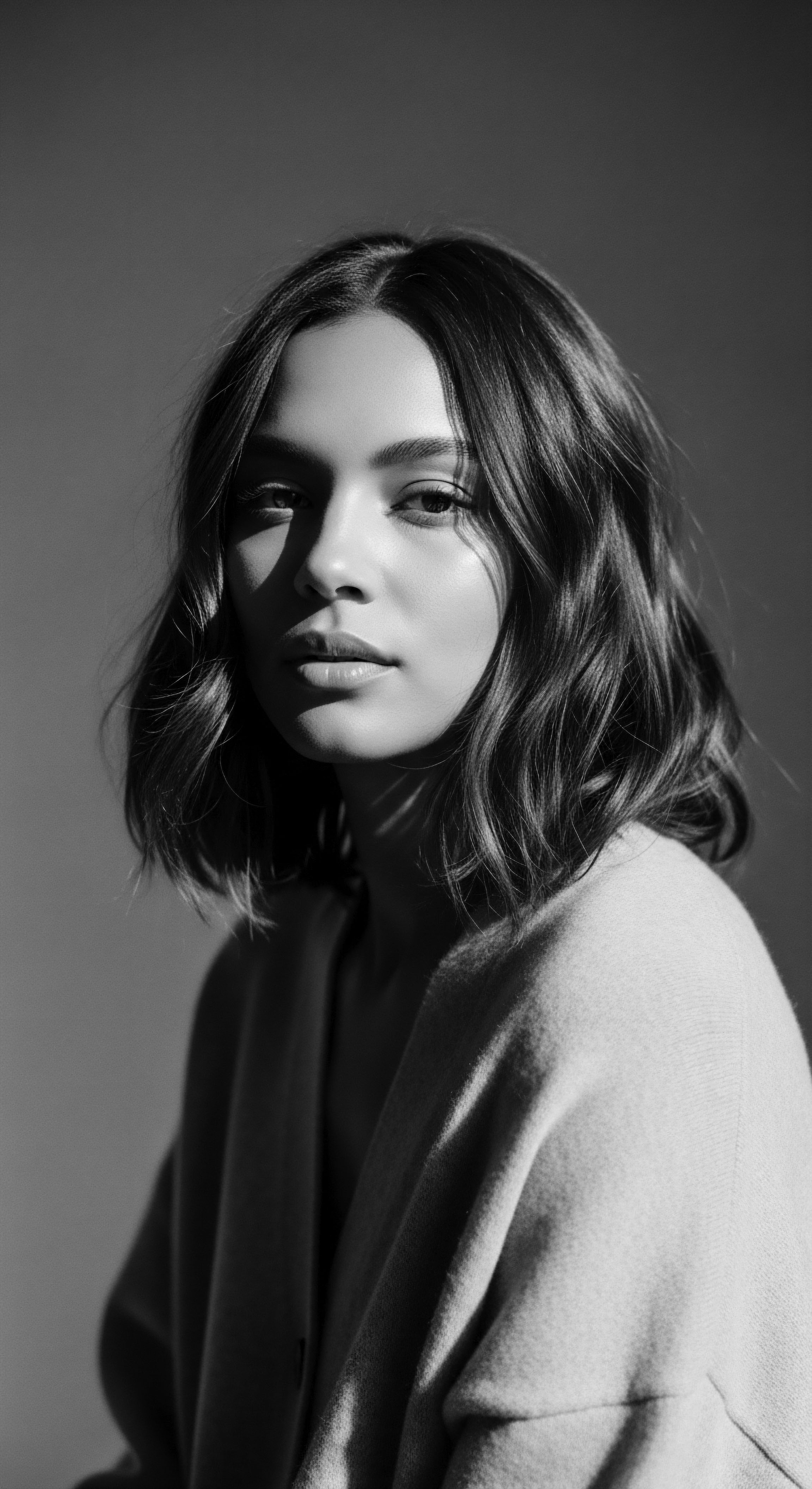
The Tender Thread ❉ Heritage and Resistance
The communal practice of hair braiding, for instance, became a secret language, a subversive act of preserving cultural memory. Enslaved women would gather, their hands moving with ancestral memory, creating patterns that sometimes encoded hidden messages, such as escape routes or safe houses along pathways to freedom. This historical case vividly illustrates the deep cultural significance and the ingenuity embedded within Textured Hair Styles, transforming them from mere adornments into vital tools of survival and communication.
The very act of styling and maintaining textured hair, especially during periods of immense hardship, reinforced a collective identity. Despite overwhelming pressures to conform to European beauty standards, African descendants in the Caribbean, South America, and the United States continued to wear braids, twists, and other traditional styles. These actions were deliberate declarations of pride in their African lineage. The significance of hair for Black people has been instilled from birth, ingrained within the culture, and has been linked to oppression when historically Black enslaved women faced punishment through forced hair cutting or shaving.
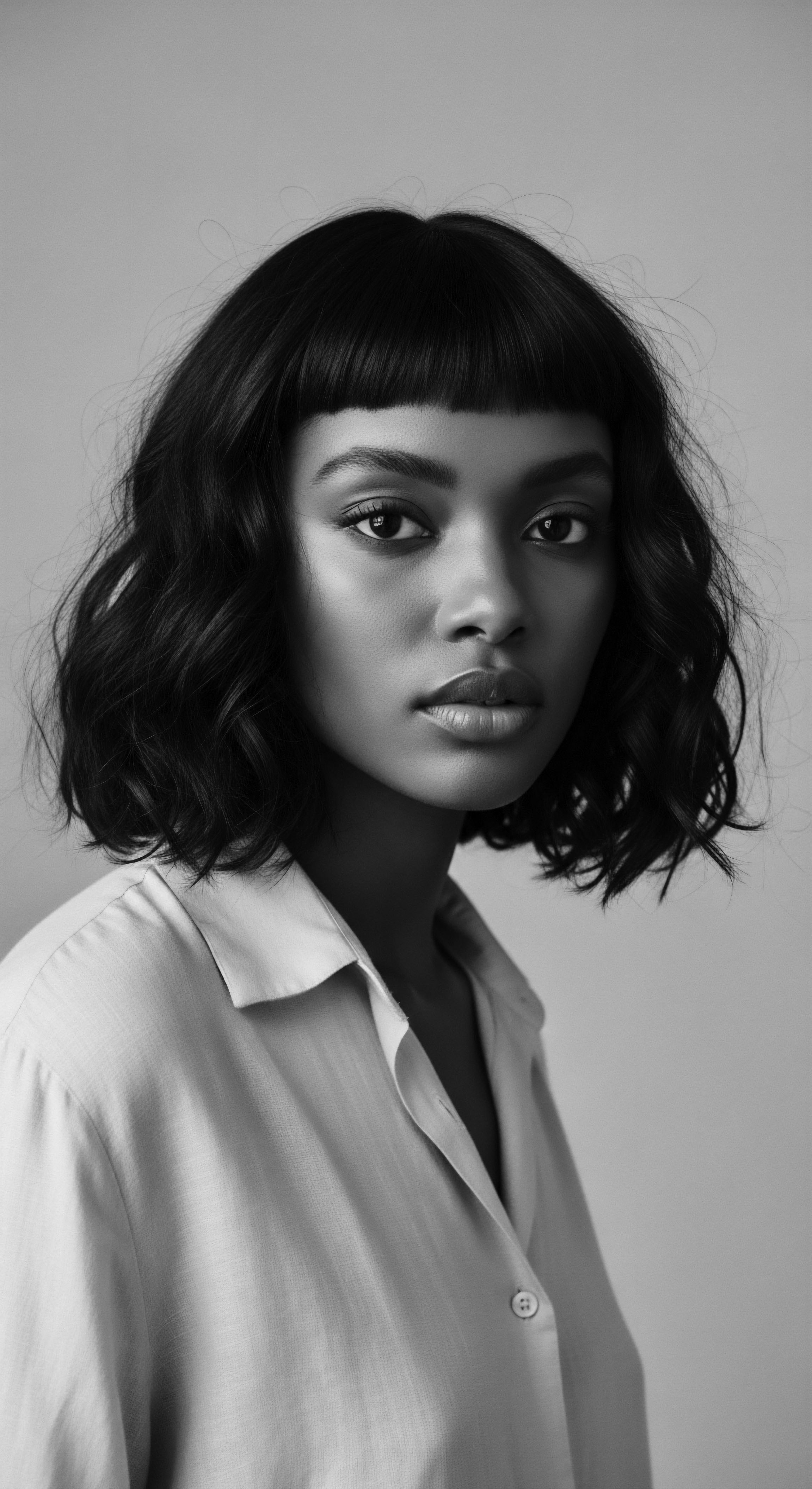
Ancestral Practices and Material Wisdom
The care of textured hair also continued through adapted practices, often utilizing whatever natural ingredients were available. This ingenuity highlights a profound understanding of hair needs, even when stripped of traditional resources. The use of natural ingredients has a long history in African hair care, with substances like shea butter, coconut oil, aloe vera, and various plant-based oils serving to nourish and protect the hair for generations.
The women of Chad, for instance, have a long-standing tradition of using Chébé Powder, a mixture of local herbs, seeds, and plants, to coat their hair, promoting length retention and minimizing breakage by locking in moisture. This practice, passed down through rituals deeply rooted in community and beauty, exemplifies how ancestral wisdom addressed the specific needs of textured hair, long before modern science articulated the mechanisms.
| Traditional Practice/Ingredient Cornrows as Maps |
| Cultural Origin/Context Used by enslaved Africans during the Transatlantic Slave Trade to communicate escape routes, concealing rice or seeds within the braids. |
| Traditional Practice/Ingredient Chébé Powder Application |
| Cultural Origin/Context Practiced by Basara Arab women of Chad to coat hair, retaining moisture and length, symbolizing identity and tradition. |
| Traditional Practice/Ingredient Dinka Hair Bleaching with Urine/Ash |
| Cultural Origin/Context Men of the Dinka people of South Sudan bleached hair with cow urine and powdered it with ash, signifying beauty or mourning. |
| Traditional Practice/Ingredient Bantu Knots |
| Cultural Origin/Context Originating from the Zulu tribe of South Africa, these knots symbolized femininity, beauty, strength, and community. |
| Traditional Practice/Ingredient These historical practices, woven into the fabric of daily life and ceremony, underscore the profound ancestral connections embedded within Textured Hair Styles. |
Understanding the historical and cultural contexts of these practices offers a richer interpretation of Textured Hair Styles. It moves beyond a superficial appreciation of their visual appeal, inviting a deeper connection to the human ingenuity and resilience that allowed these traditions to endure and evolve. The hair becomes a living archive, each strand a testament to the journeys undertaken by those who came before us.

Academic
At an academic stratum, the meaning of Textured Hair Styles transcends mere descriptive categorization, articulating a complex interplay of biology, anthropology, sociology, and deeply ingrained cultural heritage. It represents not only the diverse morphological classifications of hair characterized by tight coils, zig-zag patterns, and varied degrees of curl, but also the socio-political narratives, acts of resistance, and expressions of collective identity that have been historically inscribed upon and through these particular hair forms. The scholarly investigation of Textured Hair Styles demands an interdisciplinary lens, recognizing hair as a dynamic medium through which communities, particularly those of Black and mixed-race descent, have historically asserted autonomy, communicated social status, and preserved ancestral knowledge in the face of persistent marginalization.
The scientific comprehension of textured hair begins with its unique follicle structure. Unlike the typically round follicles that produce straight hair, textured hair emerges from an elliptical or oval-shaped follicle. This anatomical distinction dictates the helical growth pattern of the hair shaft, resulting in various degrees of curl, kink, and coil.
The numerous points of curvature along the strand contribute to its distinct appearance and require specific care methodologies to maintain its integrity, prevent breakage, and optimize moisture retention. This biological reality underpins the long-standing traditional care practices that intuitively addressed these needs, often centuries before Western science provided detailed explanations.
Textured Hair Styles, when academically considered, reveal a profound continuum of biological adaptation, cultural assertion, and ancestral knowledge within Black and mixed-race communities.

The Socio-Political Helix ❉ Hair as a Site of Identity and Contestation
Historically, textured hair has served as a potent symbolic badge, often subjected to discriminatory ideologies. The advent of slavery in the 1400s transformed these revered symbols of status and beauty into tools for racial segregation. Afro-textured hair was deemed “uncivilized” by European colonizers, leading to systemic pressure and even violence to force conformity to Eurocentric beauty standards.
The ethnographic study by Ingrid Banks (2000) provides a robust understanding of the significant impact of “hairstyle politics” on the self-identity of Black American women, a direct consequence of their heritage and the hegemonic white beauty standards they faced. This scholarly inquiry highlights the psychological and social ramifications of hair discrimination, illustrating how deeply hair is intertwined with self-perception and community acceptance.
The resistance to these imposed norms spawned enduring movements. The mid-20th century, particularly the 1960s and 1970s, witnessed the powerful emergence of the Black Power Movement, where the Afro hairstyle became a potent symbol of Black pride, a reclamation of cultural heritage, and a direct challenge to societal norms. This period marked a conscious rejection of Eurocentric beauty ideals, promoting the inherent beauty of natural textures. The very act of wearing one’s hair in its natural state became a political statement, a visual declaration of identity and liberation, emphasizing the critical role of Textured Hair Styles in sociopolitical transformation.
The concept of “good hair,” often defined by its proximity to European hair textures, continues to influence perceptions within and beyond the Black community, even into the 21st century. This complex dynamic underscores the enduring legacy of historical oppression and the ongoing efforts to decolonize beauty standards. Legal frameworks like the CROWN Act, which prohibits race-based hair discrimination, represent contemporary societal recognition of the historical injustices faced by individuals with textured hair, affirming the profound cultural and personal significance of these styles.

Deepening the Ancestral Knowledge ❉ Specific Rituals and Meanings
Consider the Dinka people of South Sudan, a Nilotic group whose cultural traditions profoundly connect hair to identity and life stages. Dinka men, for example, historically bleached their hair using applications of cow urine, then powdered it with ash to achieve a reddish-golden hue, which was considered a sign of beauty. Conversely, maintaining black hair signified sadness or a period of mourning. This practice extends beyond cosmetic preference, embodying a distinct cultural semiotics where hair color directly communicated internal states and social conditions.
The application of cow dung ash to the body also served practical purposes, repelling insects, while the urine contributed to the desired hair color. This specific historical instance serves as a compelling case study of how Textured Hair Styles are not merely aesthetic choices but are deeply embedded in spiritual beliefs, social indicators, and the utilization of natural resources unique to a given environment.
- Ancient Egyptian Hair Symbolism ❉ In Ancient Egyptian society, hair held religious and erotic significance, communicating gender, age, and social status. Elaborate styles, including wigs crafted from human hair and adorned with gold and beads, symbolized wealth and a connection to the divine.
- Yoruba Spiritual Connections ❉ In Yoruba cosmology, hair is considered a sacred conduit of spiritual energy, linking individuals to ancestors and deities. Skilled braiders held respected positions, crafting styles with deep spiritual meaning, often related to femininity, marriage, or coming-of-age rituals.
- Himba Ochre Application ❉ The Himba tribe in Namibia coats their hair with a paste of red ochre, butter, and herbs, a distinctive practice symbolizing their connection to the earth and ancestral heritage, while also protecting the hair from the sun.
- Amasunzu Styles of Rwanda ❉ The Hutu and Tutsi populations of Rwanda wore the Amasunzu style, characterized by intricately cut and sculpted hair, often signifying readiness for battle or spiritual transformation.
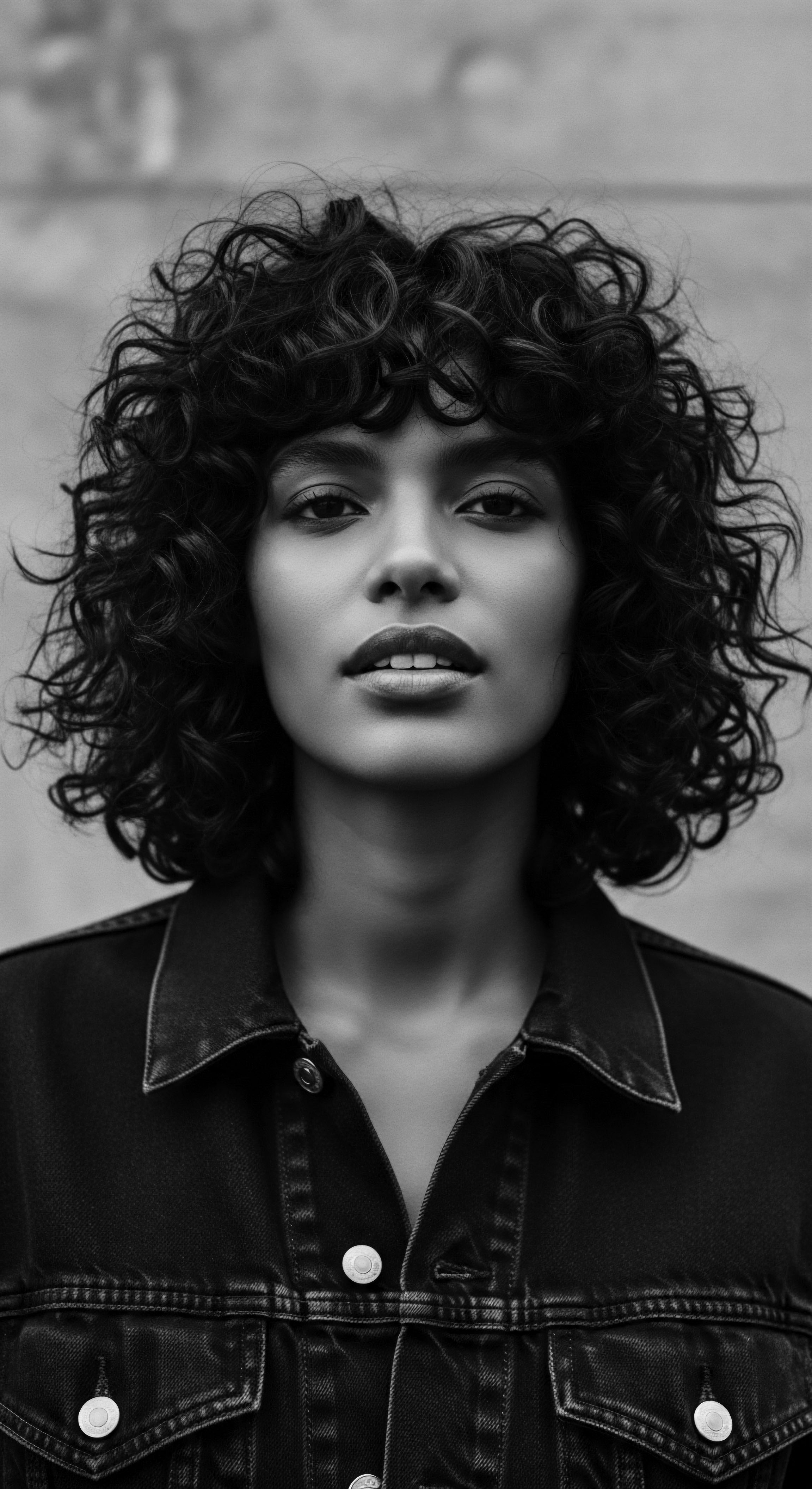
The Interconnectedness of Care and Cultural Practices
The traditional knowledge surrounding the care of textured hair offers valuable insights for contemporary practices. Ancient African civilizations utilized natural butters and botanical blends to maintain hair health and protect against harsh elements. These methods, passed down through generations, reveal an intuitive understanding of the hair’s needs, often focusing on moisture, protection, and gentle handling.
The long-standing use of ingredients like shea butter and the more recent global appreciation for Chébé powder illustrate a continuous thread of ancestral wisdom informing modern hair care solutions. The enduring efficacy of these traditional remedies underscores the profound connection between cultural practice and hair wellness.
The study of Textured Hair Styles, through this academic lens, highlights a critical perspective ❉ these styles are not static artifacts but living traditions that have evolved in response to societal pressures, cultural shifts, and personal expressions of identity. They serve as a powerful medium for understanding the complexities of racial identity, the history of colonialism, and the ongoing movement towards self-acceptance and decolonized beauty standards. The academic discourse contributes to a deeper understanding of hair as a cultural landscape, marked by centuries of meaning-making and resistance.
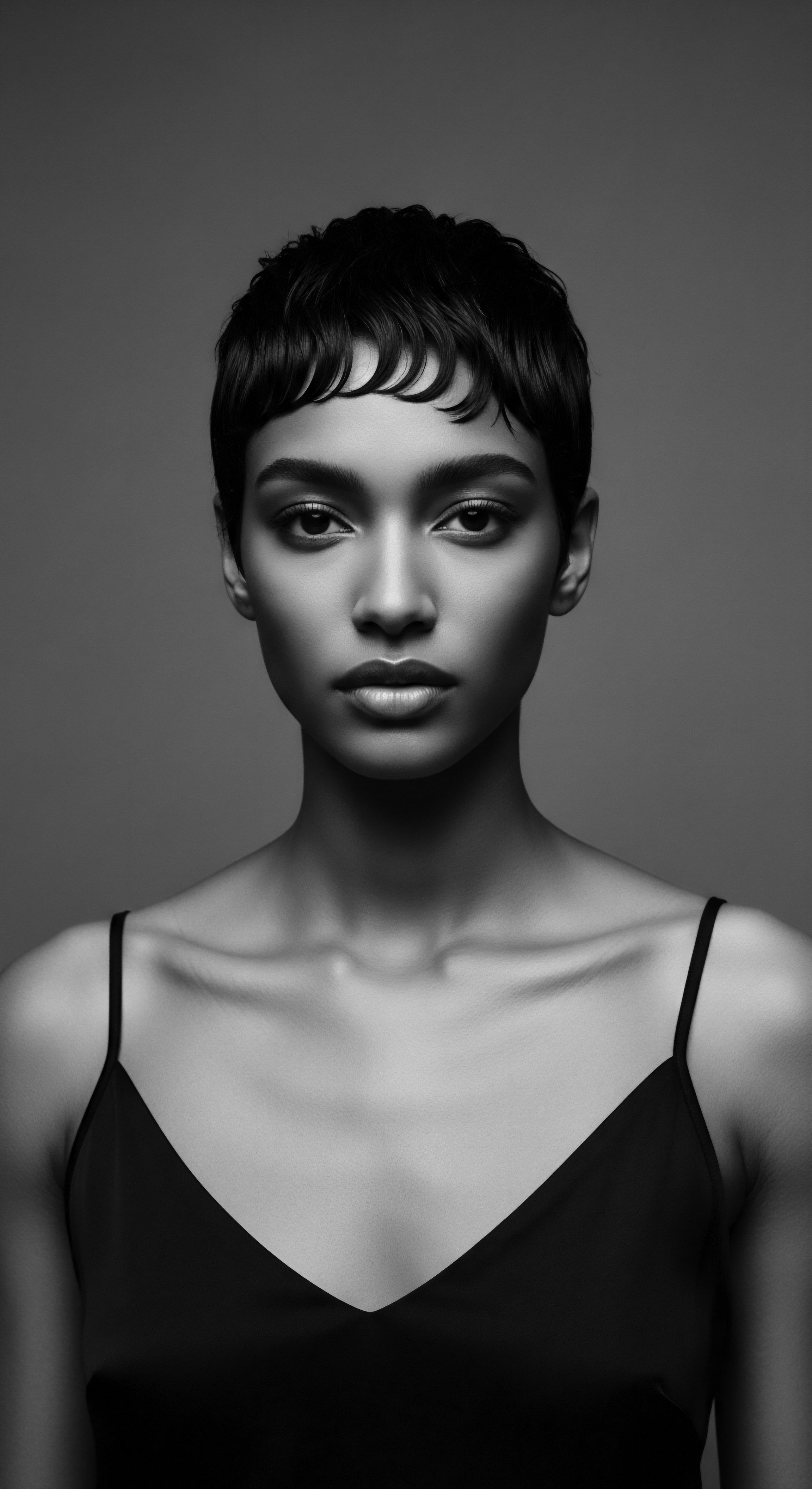
Reflection on the Heritage of Textured Hair Styles
The journey through the intricate world of Textured Hair Styles leaves one with a profound appreciation for its enduring heritage and ever-unfolding significance. From the primordial coils that emerged from ancient African lands, carrying the narratives of ancestry and community, to the deliberate and defiant twists and braids that emerged as symbols of survival during periods of immense human struggle, the hair stands as a testament to the indomitable spirit of its people. It is a living, breathing archive, each strand imbued with the wisdom of generations past and the vibrant pulse of those who continue to honor these traditions.
The careful tending of textured hair, whether through time-honored techniques passed down in hushed tones or through the scientific validation of ancestral ingredients, speaks to a deep, inherent respect for the self and one’s lineage. The cultural meaning woven into every braid, every coil, every pattern, goes beyond simple adornment. It communicates stories of resilience, the preservation of identity in the face of overwhelming odds, and a celebration of a unique aesthetic that has, for far too long, been subjected to external judgments. The profound connection to ancestral practices, evident in the Dinka men’s intentional use of cow urine for hair modification or the Basara women’s Chebe rituals, reveals a sophisticated, embodied knowledge that resonates with contemporary understanding of natural care.
As we gaze upon the varied landscape of Textured Hair Styles today, we witness a renaissance—a beautiful re-connection to source. The conscious choice to wear one’s natural texture, or to adorn it with styles rooted in ancient traditions, is a powerful act of self-acceptance and a reaffirmation of cultural pride. It is a harmonious blend of the ancient and the modern, a soulful whisper from the past that finds vibrant expression in the present. This ongoing dialogue between history, care, and identity ensures that the heritage of textured hair continues to flourish, a radiant crown worn with dignity and ancestral grace.
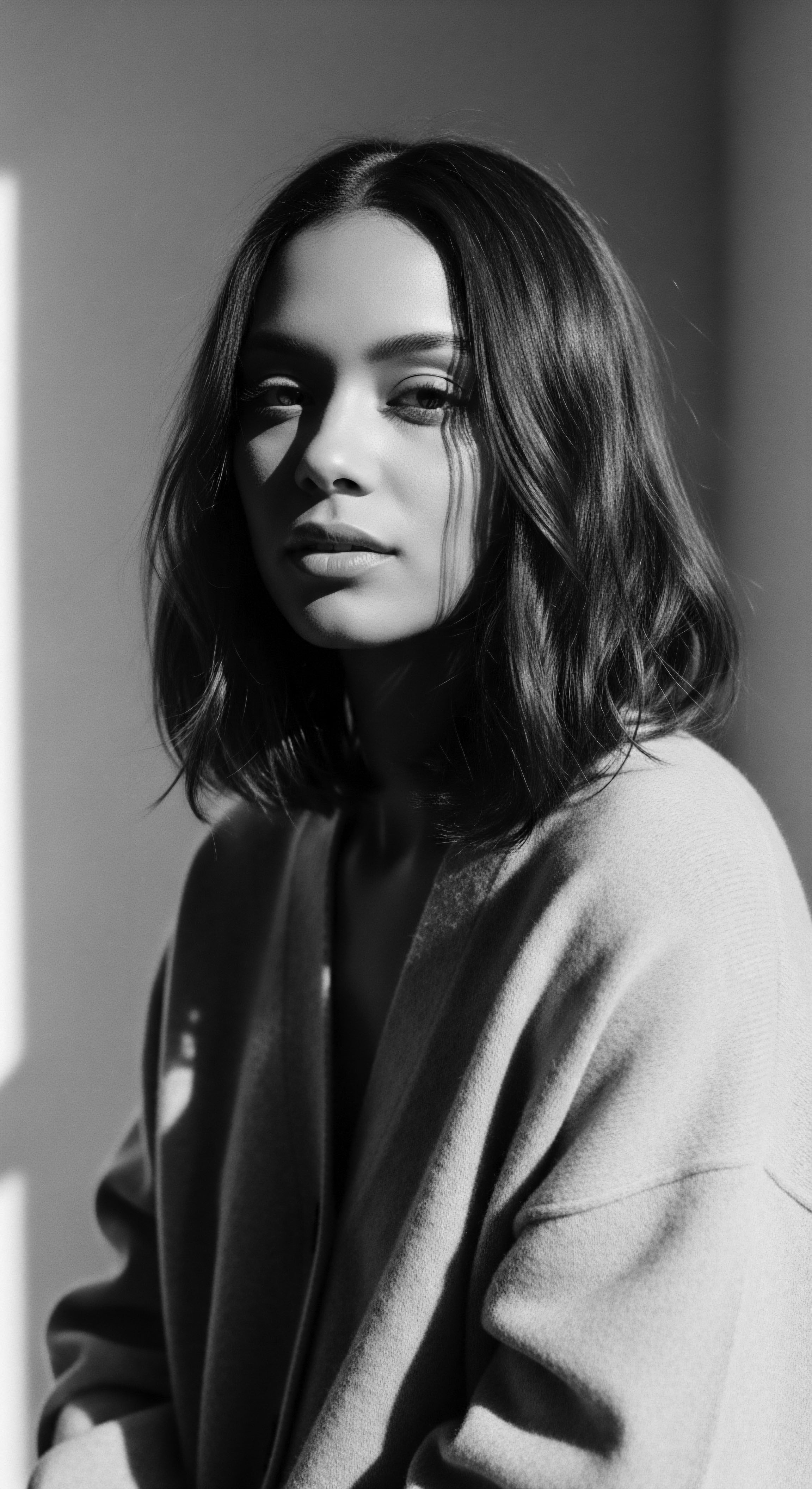
References
- Byrd, Ayana, and Lori Tharps. Hair Story ❉ Untangling the Roots of Black Hair in America. St. Martin’s Press, 2001.
- Dabiri, Emma. Twisted ❉ The Tangled History of Black Hair Culture. Harper Perennial, 2020.
- Jacobs-Huey, Lanita. From the Kitchen to the Parlor ❉ Language and Becoming in African American Women’s Hair Care. Oxford University Press, 2006.
- Mercer, Kobena. Welcome to the Jungle ❉ New Positions in Black Cultural Studies. Routledge, 1994.
- Rooks, Noliwe M. Hair Raising ❉ Beauty, Culture, and African American Women. Rutgers University Press, 1996.
- Omotos, Adetutu. “The Significant Symbolism of Hair in Traditional African Culture.” Journal of Pan African Studies, 2018.
- Banks, Ingrid. Hair Matters ❉ Beauty, Power, and Black Women’s Consciousness. New York University Press, 2000.
- Ellington, Tameka N. Black Hair in a White World. The Kent State University Press, 2021.
- Gordon, Mark. Hair ❉ A Cultural History. Rizzoli International Publications, 2008.
- Patton, Tracey. African-American Women and Hair ❉ Is It Just Hair? Palgrave Macmillan, 2006.
